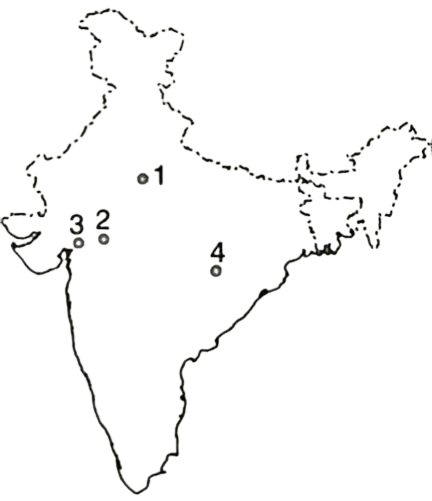The Maratha rule and Administration in India marked a significant chapter in the country’s history, characterized by military prowess, administrative innovation, and cultural resurgence. Emerging from the Deccan plateau, the Marathas, under the leadership of iconic figures like Shivaji and his descendants, carved out a formidable empire that stretched across vast swathes of the Indian subcontinent. Their governance model, marked by decentralization and efficient administration, left an indelible imprint on Indian polity and society. In this exploration of the Maratha rule and administration, we delve into the intricate mechanisms of governance, the key institutions like the Ashta Pradhan council, and the cultural and administrative reforms that defined this influential period in Indian history. Through a series of UPSC Prelims topic-wise questions, we unravel the complexities of Maratha rule, offering insights into its enduring legacy and impact on the Indian subcontinent.
Contents
- 1 1. Consider the map given below.(1995)
- 2 2. The Modi Script was employed into the documents of(1995)
- 3 3. Ashta Pradhan was a council of ministers(1995)
- 4 4. The member of Shivaji’s Ashta Pradhan who looked after foreign affairs was (1998)
- 5 5. Who among the following streamlined the Maratha Administration after Sambhaji? (2000)
- 6 Frequently Asked Questions
- 6.1 Q1. What was the significance of the Modi Script in historical contexts?
- 6.2 Q2. What was the purpose of the Ashta Pradhan council in the Maratha administration?
- 6.3 Q3. Who was responsible for foreign affairs in Shivaji’s Ashta Pradhan council?
- 6.4 Q4. How did Balaji Viswanath contribute to the reorganization of the Maratha Administration after Sambhaji’s reign?
- 6.5 Q5. What were the key ministerial roles in the Ashta Pradhan council of the Maratha administration?
- 7 In case you still have your doubts, contact us on 9811333901.
1. Consider the map given below.(1995)

The places marked 1, 2, 3 and 4 were respectively the seats of powers of the
(a) Scindias, Holkars, Gaekwads and Bhonsles
(b) Holkars, Scindias, Gaekwads and Bhonsles
(c) Gaekwads, Bhonsles, Scindias and Holkars
(d) Scindias, Holkars, Bhonsles and Gaekwads
Ans. (a)
Exp: The places marked 1, 2, 3 and 4 were respectively the seats of powers of the Scindias, Holkars, Gaekwads and Bhonsles. Scindia was a Hindu Kunbi Maratha dynasty that ruled the Gwalior state.
2. The Modi Script was employed into the documents of(1995)
(a) Wodeyars
(b) Zamorins
(c) Hoysalas
(d) Marathas
Ans. (d)
Exp. The Marathas adopted the Modi Script for their administrative documents, utilizing it alongside the Devanagari script to record revenue and administrative records. This script, specific to the Marathi language spoken in Maharashtra, remained in use until the 20th century.
3. Ashta Pradhan was a council of ministers(1995)
(a) in the Gupta administration
(b) in the Chola administration
(c) in the Vijayanagara administration
(d) in the Maratha administration
Ans. (d)
Exp. The Ashta Pradhan comprised a council of ministers within the Maratha administration, representing a system of ministerial delegation in the Maratha empire.
There were the eight ministerial roles as follow:
1. Peshwa-Prime Minister
2. Shurunavis-Secretary
3. Amatya or Mazumdar-Finance Minister
4. Waqia-Navis-Interior Minister
5. Senapati Commander-in-Chief (Sar-i-Naubat)
6. Sumant/Dabir-Foreign Minister
7. Nyayadhish-Chief Justice
8. Pandit Rao-High Priest
4. The member of Shivaji’s Ashta Pradhan who looked after foreign affairs was (1998)
(a) Peshwa
(b) Sacheev
(c) Pandit Rao
(d) Sumant
Ans. (d)
Exp.Sumant, also known as Dabir, was responsible for foreign affairs among the members of Shivaji’s Ashta Pradhan. Established by Shivaji, the founder of the Maratha empire, in 1674 AD, the Ashta Pradhan system consisted of eight prominent officials who oversaw various aspects of the Maratha administration.
5. Who among the following streamlined the Maratha Administration after Sambhaji? (2000)
(a) Raja Ram
(b) Balaji Viswanath
(c) Ganga Bai
(d) Nanaji Deshmukh
Ans. (b)
Exp: Balaji Viswanath, from 1662 to 1720 AD, significantly reorganized the Maratha Administration following Sambhaji’s reign. He played a pivotal role in securing Shahu’s ultimate victory by garnering the support of nearly all Maratha Sardars for Shahu’s cause.
Frequently Asked Questions
Q1. What was the significance of the Modi Script in historical contexts?
The Modi Script was employed into the documents of the Marathas, as it was specifically adapted for the Marathi language spoken in Maharashtra. It coexisted with the Devanagari script and was utilized for administrative and revenue records until the 20th century.
Q2. What was the purpose of the Ashta Pradhan council in the Maratha administration?
The Ashta Pradhan council, established by Shivaji in 1674 AD, served as a system of ministerial delegation within the Maratha empire. Consisting of eight prominent officials, it oversaw various aspects of governance and administration, ensuring effective management of the empire.
Q3. Who was responsible for foreign affairs in Shivaji’s Ashta Pradhan council?
Sumant, also known as Dabir, was the member of Shivaji’s Ashta Pradhan council entrusted with the responsibility of handling foreign affairs. His role was crucial in managing diplomatic relations and external affairs for the Maratha empire.
Q4. How did Balaji Viswanath contribute to the reorganization of the Maratha Administration after Sambhaji’s reign?
Balaji Viswanath, during his tenure from 1662 to 1720 AD, played a pivotal role in streamlining the Maratha Administration following the tumultuous period under Sambhaji’s rule. His efforts were instrumental in securing victory for Shahu by rallying the support of Maratha Sardars to Shahu’s cause.
Q5. What were the key ministerial roles in the Ashta Pradhan council of the Maratha administration?
The Ashta Pradhan council of the Maratha administration comprised eight ministerial roles, including the Peshwa (Prime Minister), Shurunavis (Secretary), Amatya or Mazumdar (Finance Minister), Waqia-Navis (Interior Minister), Senapati (Commander-in-Chief), Sumant/Dabir (Foreign Minister), Nyayadhish (Chief Justice), and Pandit Rao (High Priest). Each official played a crucial role in governing and managing various aspects of the empire’s administration.
In case you still have your doubts, contact us on 9811333901.
For UPSC Prelims Resources, Click here
For Daily Updates and Study Material:
Join our Telegram Channel – Edukemy for IAS
- 1. Learn through Videos – here
- 2. Be Exam Ready by Practicing Daily MCQs – here
- 3. Daily Newsletter – Get all your Current Affairs Covered – here
- 4. Mains Answer Writing Practice – here

